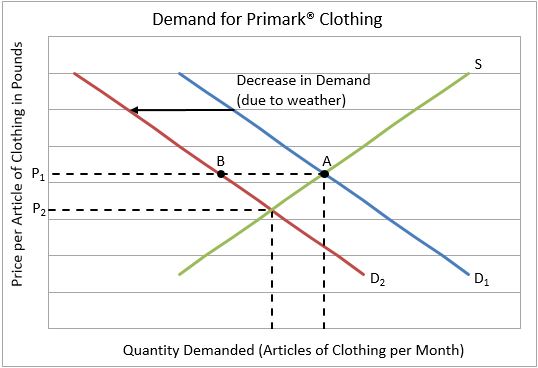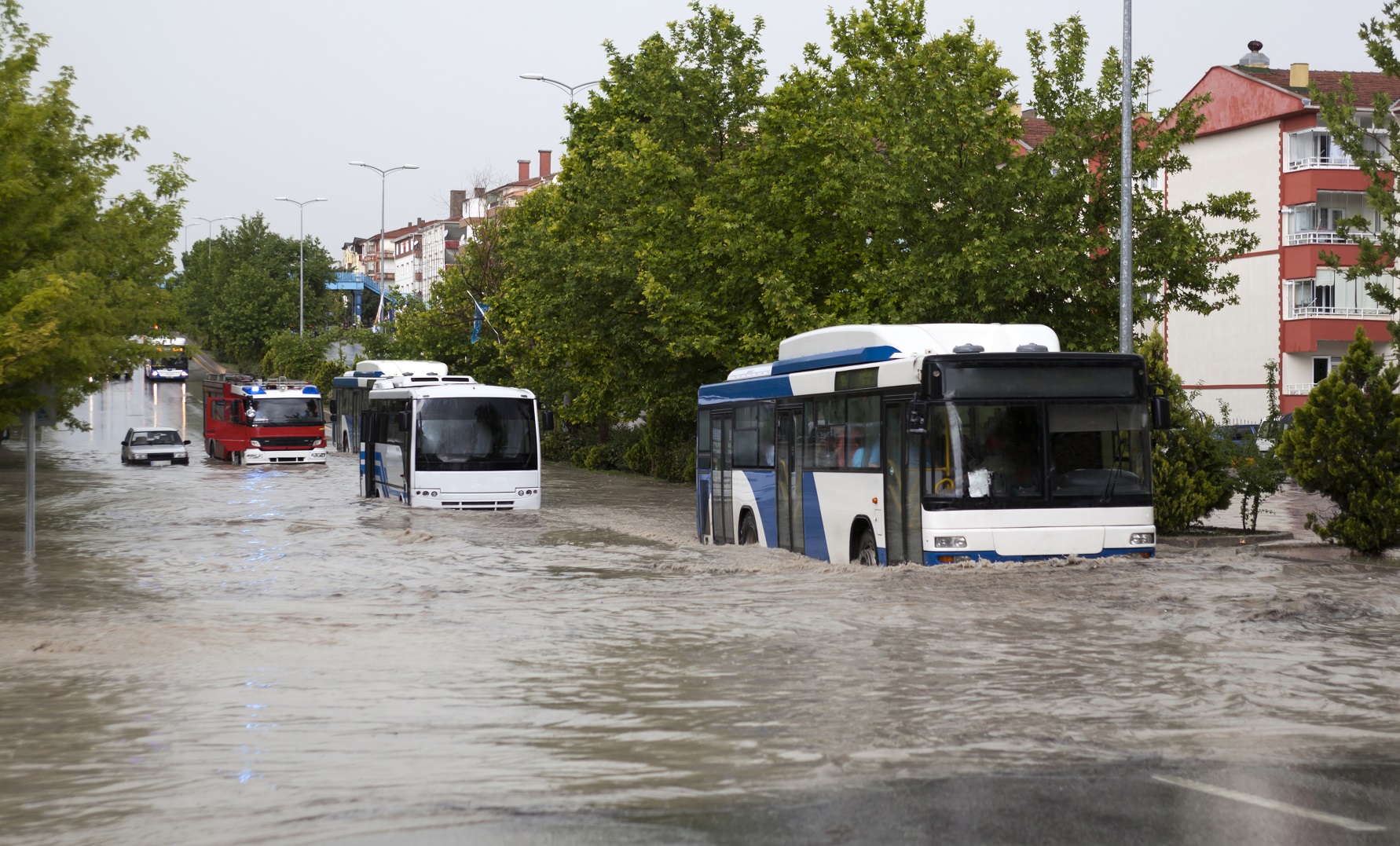International budget clothes retailer Primark recently made the news by blaming the weather for a fall in sales. Essentially, said Primark, the warm weather in the run-up to Christmas 2015 meant that people simply didn't buy as many clothes. This, of course, was followed by an unseasonably cool spring, which only added to the problem by slowing down the sales of summer clothes. With limited warehouse space and deliveries constantly on the way from countries halfway across the world, Primark couldn't simply sit on the stock they had. The retailer was forced to offer larger-than-usual discounts, meaning they sold fewer clothes for less money. All in all, it wasn't a great year for them.
In the case of Primark, the demand was less than expected, so inventories increased. This is illustrated on the graph below where the weather causes the demand curve to shift from D
1 to D
2. AB is the surplus, or mounting inventories. To rid itself of its inventories, Primark dropped its price to P
2.

But, Primark's weather-related suffering aside, this raises an interesting point: how important is the weather to businesses? There are some industries where a direct link between weather and sales is obvious. Ice cream is a good example. When the weather is hot, ice cream sales soar. When it's cold, on the other hand, few people are interested in queuing up to grab a Cornetto. And, of course, there are occasional extreme weather events which affect almost every business, no matter what they do. Even a mostly weatherproof industry can suffer when heavy snow makes it impossible for their workers to complete their commute and buyers remain at home. How about a ski resort closing because of too much snow? It happened in 1977 in upstate New York when skiers and workers were unable to get to the slopes!
There are, however, other less obvious links to be made. Weather is something that affects the mood, behavior, and habits of consumers in complicated, subtle, and unpredictable ways. Many businesses invest a great deal of time and energy in searching for patterns that correspond to the weather, in order to exploit them when the moment is right. The Campbell's Soup Company, for example, has conducted a lot of diligent research into the buying trends of its customers. And what have they found? The best time to sell soup, it seems, is when the weather is consistently bad. Campbell's, therefore, keeps a "Misery Index", tracking areas where the weather has been particularly cruel in recent weeks. This allows them to pour on more radio advertising in the worst hit localities.
Unlike our ice cream example from earlier, it's pretty unlikely that you could have predicted the effect that inclement weather might have on the sales of chicken soup! But this is why weather is so important. It affects everyone, and it affects them every day. Weather can also affect the supply of goods and services. For example, drought or flooding can damage crops and cause the supply curve to shift to the left. This explains the increase in produce prices when grocery stores have to find new, more expensive sources. Even if you're looking at an industry which you'd think might not be subject to the whims of Mother Nature, it might still be worth keeping an eye on the clouds. Remember – weather is unpredictable, changeable, unmanageable, and quite often annoying! But it's important, so don't forget to take it into account.
To learn more about supply and demand visit our 11 lessons related to
Supply and Demand.
Question:
Can you think of other industries which might be directly affected by changes in the weather? If so, how could they possibly prepare for these?
Sources:
BBC News,
Primark blames weather for falling sales , September 12, 2016.
Inc. This Morning,
Outsmarting Mother Nature and Targeting Customers, March 4, 2011

